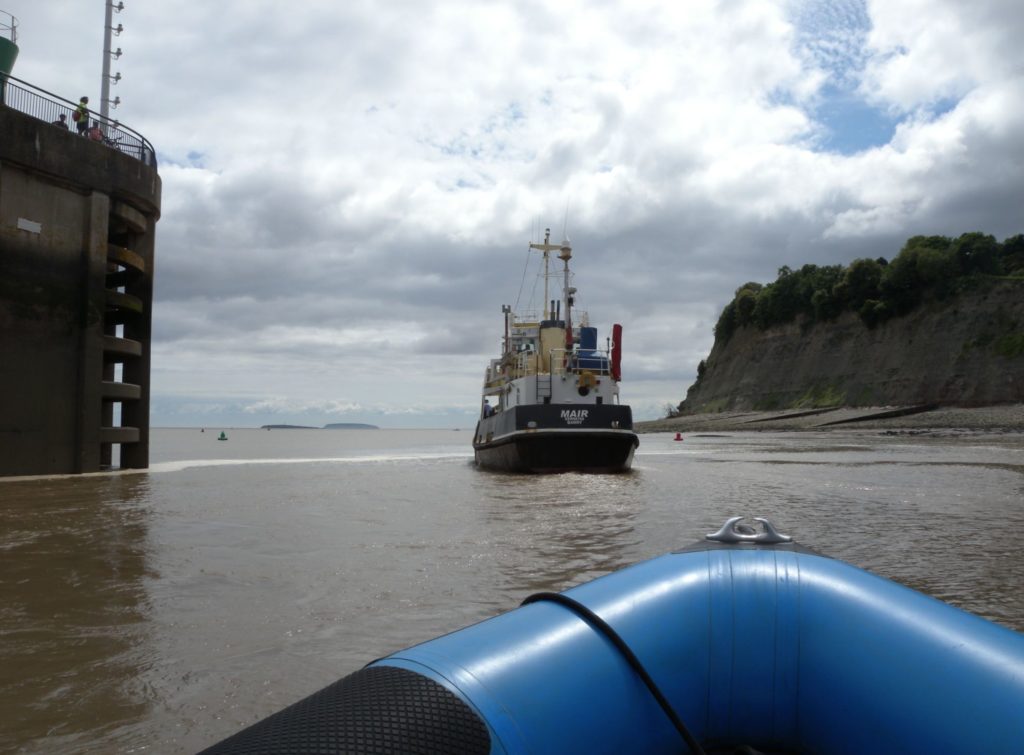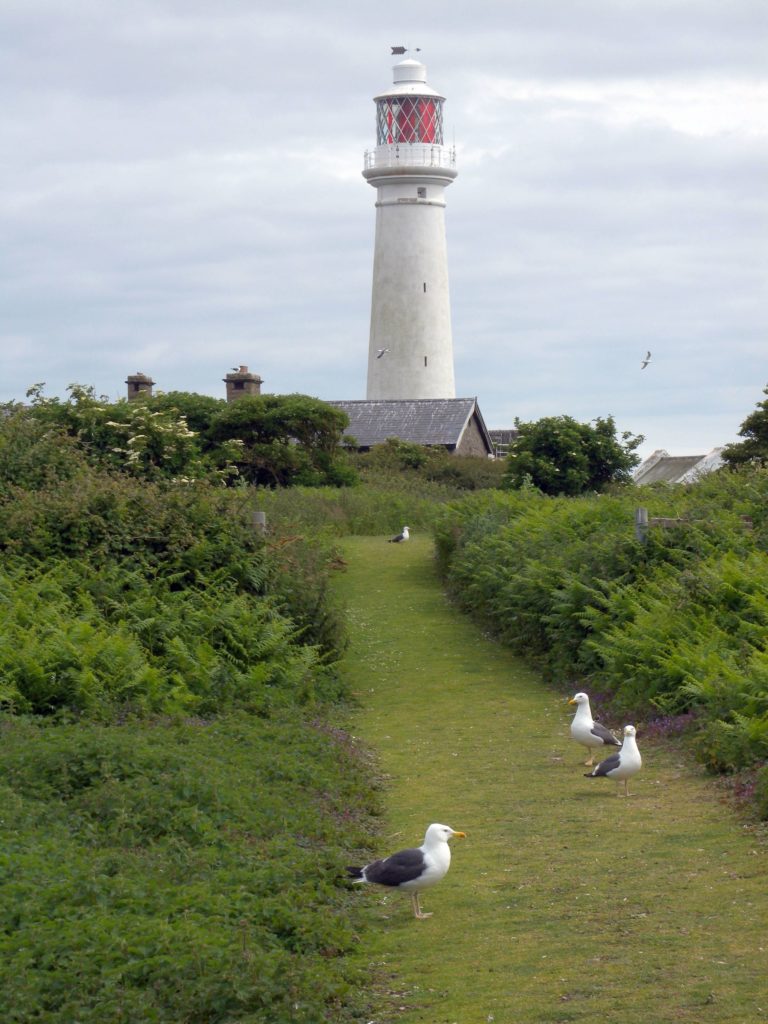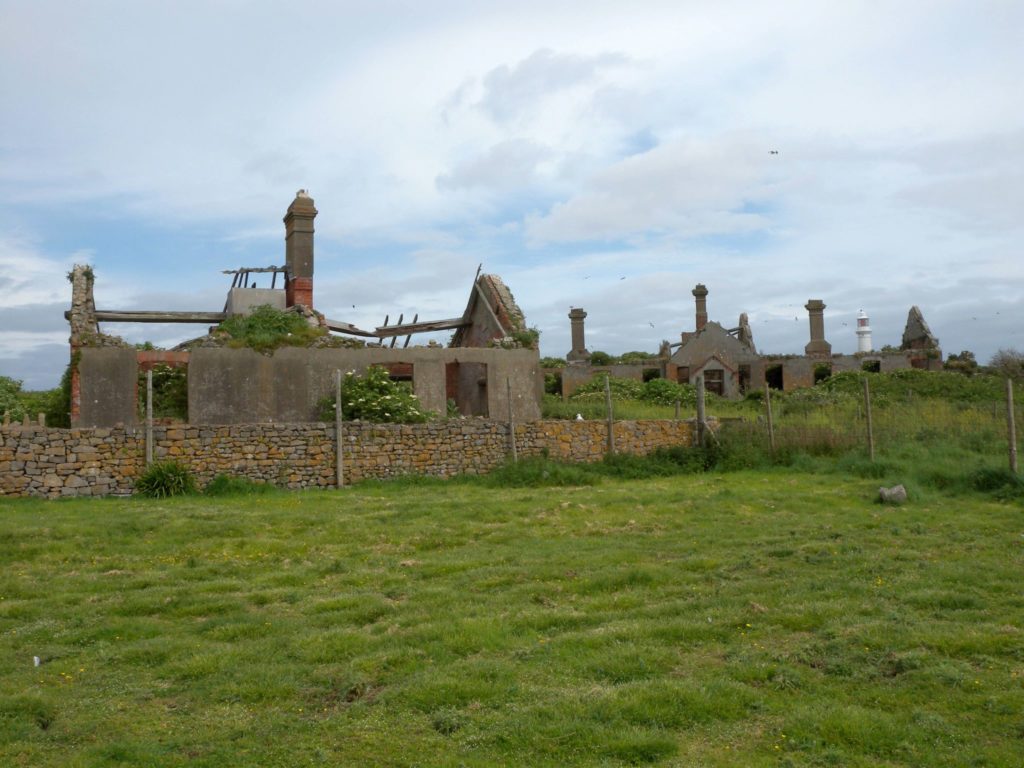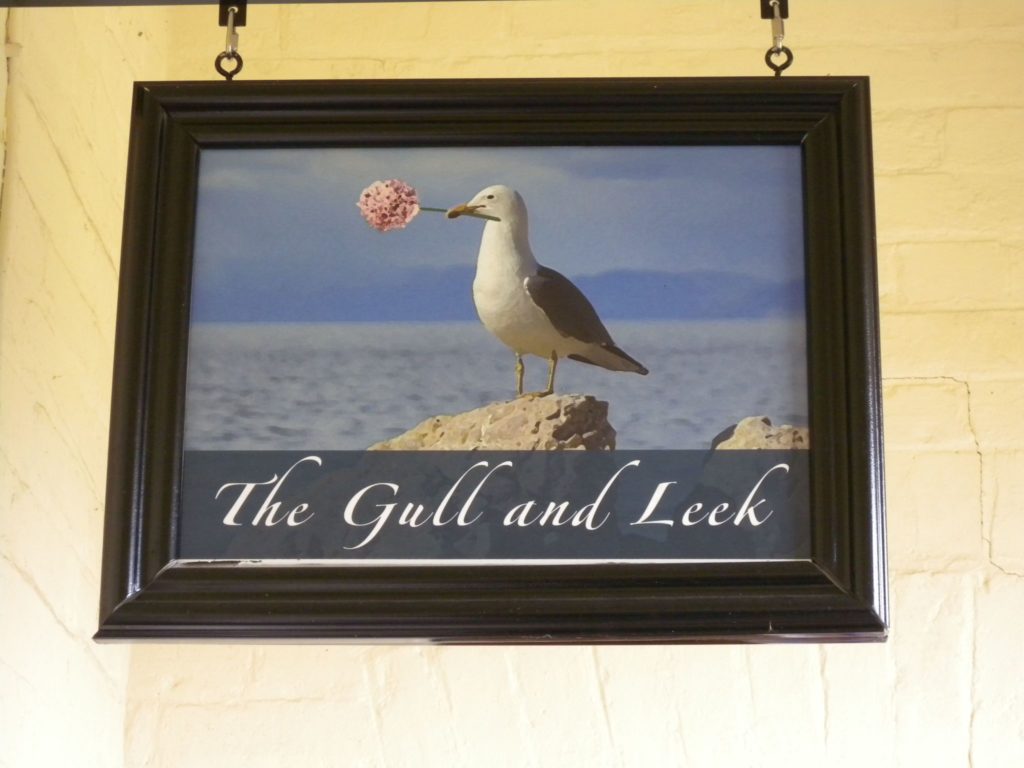Letter from Flat Holm

Warren Kovach
It was literally a white-knuckle ride. When I booked the boat to Flat Holm Island, I hadn’t realised it would be by a fast RIB powerboat, rather than a more sedate tour boat that usually brings me to Welsh islands.
After we passed through the Cardiff Bay barrage locks the boat sped up and I tightly gripped the bar in front of me.
We bounced through the waves, the sea spray leaving the taste of the Bristol Channel in my mouth. But we soon arrived at the landing stage, thrilled and ready to explore the island.
My main goal in visiting Flat Holm (Ynys Echni) was to see and photograph the magnificent lighthouse, to tick off another one in my tour of the lights that dot the coast of Wales.
But Flat Holm has so much more to offer: wildlife, medieval history, military defence structures and Victorian public health measures.

Arrival
We were met at the top of the landing stage by Simon, the new warden for Flat Holm.
He laid out the ground rules of the island (stick to the paths as much as possible, watch out for rabbit holes, be back in time for the return boat) and collected the landing fee that goes towards upkeep of the island.
He then handed over to the tour guide Cath, from the Flat Holm Society, who had come over on the boat with us and declared the journey just 4 out of 10 in terms of roughness.
She and her booming voice were going to show us around the sights of the island.
Gull territory
First, though, we had to become accustomed to the aerial attacks. The island is home to thousands of nesting gulls, mainly lesser black-backed.
There were clutches of eggs and scurrying spotted chicks everywhere we looked.
Some of the parents were swooping low over our heads as we walked down the path, warning us away from their families.
I felt lucky to escape with just a small spot of bird poo on my trousers; the state of the warden’s jacket showed they can be much more thorough in using that as a deterrent.

Lighthouse
The first stop was the lighthouse. Flat Holm is a low-lying island in the Bristol Channel, right in the middle of the shipping lanes going into Bristol and the Severn Estuary. As a result, it presents a hazard to passing ships.
For many years the construction of a lighthouse was discussed by ship owners and the Society of Merchant Venturers of Bristol.
The loss of 60 soldiers in a shipwreck nearby in 1736 finally prompted the building of a tower with a coal brazier on top.
It was first lit in 1738. In 1819 Trinity House (the lighthouse authority for England and Wales) took over running the lighthouse from its private owners and rebuilt the top of the tower, installing a brighter oil lamp to replace the coal.
In 1988 the lighthouse was automated, so that keepers no longer needed to live on the island, and in 1997 it was converted to solar-powered electricity.
The island was occupied long before the lighthouse keepers arrived. There is evidence of Bronze Age occupation (900 to 700 BC) in a bronze axe head found in the 1980s.
It was a religious retreat in the early Christian days, starting with St Cadoc in the 6th century AD, and there are traces of occupation and farming in the centuries since, at one point being used as a dairy farm for the monks at St Augustine’s Abbey in Bristol.

Fortifications
In the 1860s there was concern about the growing strength of the French Navy. Under the premiership of Lord Palmerston, the construction of a series of forts began around the UK coast.
Flat Holm was ideal to protect the Bristol Channel, so four defensive batteries and a barracks were built between 1865 and 1869.
But by then relations with the French had thawed and the fort never had to deter an enemy. A few gunners were stationed on the island for a while, but they were eventually withdrawn in 1901.
These structures are in good condition, having been restored in recent years. The redundant seven-ton muzzle-loading cannons, too heavy to be brought back to the mainland, remain scattered in the vegetation near the batteries.
The Second World War saw the refortification of the island with a radar station, anti-aircraft guns and searchlights. There were 350 soldiers stationed there until 1944.

Isolation hospital
In 1883 three cholera-stricken seamen were offloaded onto the island rather than allowing them into Cardiff Bay. One later died.
This led the island’s owner, the Marquis of Bute, to lease part of the island to Cardiff Corporation for the construction of an isolation hospital.
Sailors arriving at the port suspected of having an infectious disease were packed off to Flat Holm.
It was later used for patients from other Bristol Channel ports but was closed down in 1935.
Marconi
The end of the 19th century saw a major historic event take place on this rather unassuming and remote island.
A young Italian engineer, Guglielmo Marconi, was looking for a place to test his ideas for transmission of wireless signals to offshore ships.
He had met Welshman William Preece, the Chief Engineer of the General Post Office, who suggested the Bristol Channel.
The two of them erected transmission masts on Flat Holm and at Lavernock Point on the mainland.
After a couple of failures, they were able to send the first Morse Code message across the open water from Flat Holm, saying simply “Are you ready?”
Wildlife
The tour of the various historic structures took us around the circumference of the island, inspecting them and enjoying the wildlife.
Besides running the gauntlet of angry gulls, we also saw evidence of the resident peregrine falcon in the bones and feathers of one of the gulls on the path.
Oystercatchers nested nearby and rabbits could be seen criss-crossing the path in the distance. Wild peonies and wild leeks were the highlights of the plant life.
A small flock of Boreray sheep, a breed that originated on the St Kilda islands off Scotland, were introduced to Flat Holm two years ago, but they eluded us

The tour ended back at the barracks by the lighthouse, which has been converted into an education centre, shop, and the most southerly pub in Wales, the Gull and Leek.
After choosing a fine Gunner Stout from their selection of seven specially brewed beers and ciders we sat down for a chat with the guide Cath while we looked out the window to the lighthouse.
Well-fortified we were ready for the exhilarating boat ride back to Cardiff.
Support our Nation today
For the price of a cup of coffee a month you can help us create an independent, not-for-profit, national news service for the people of Wales, by the people of Wales.






